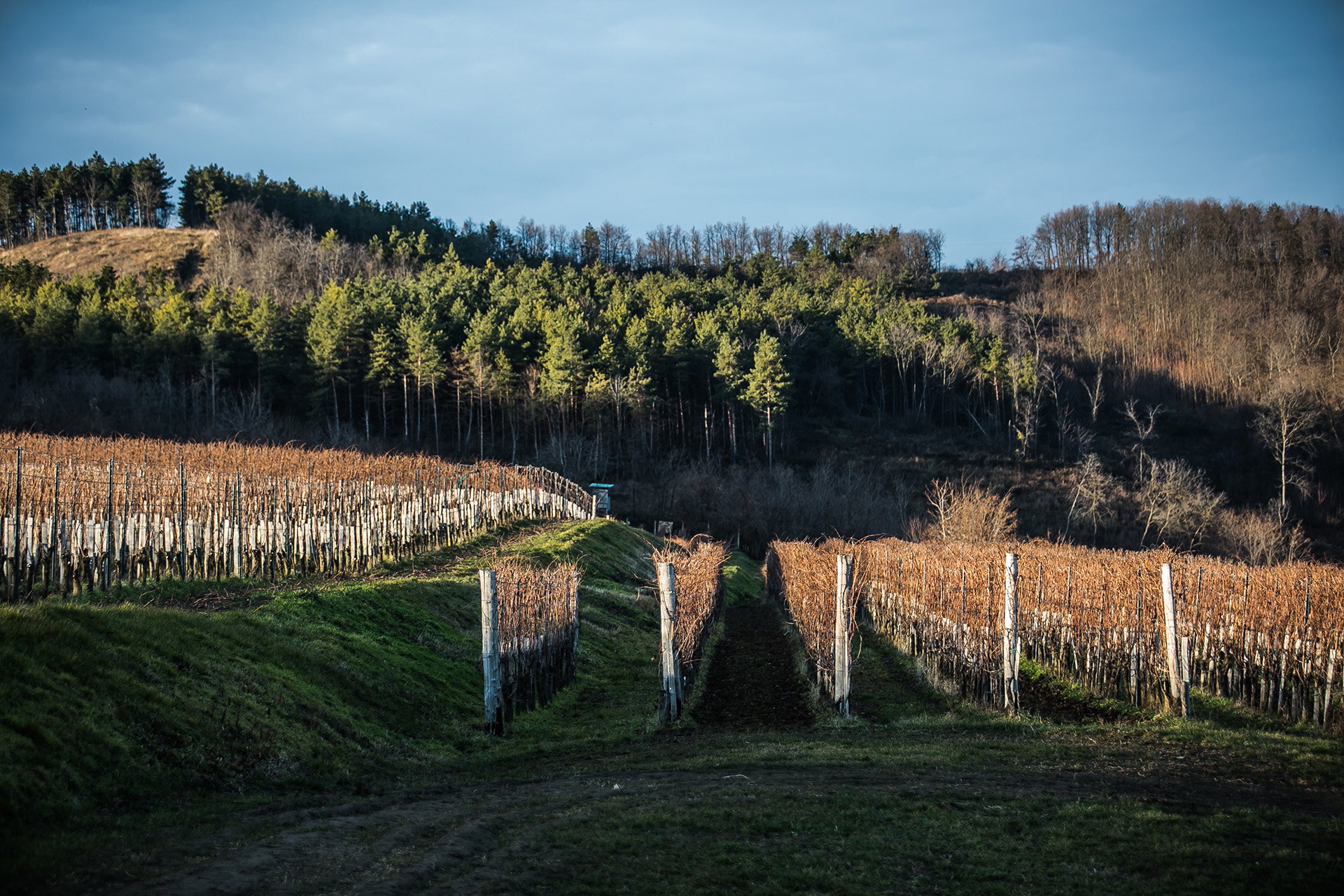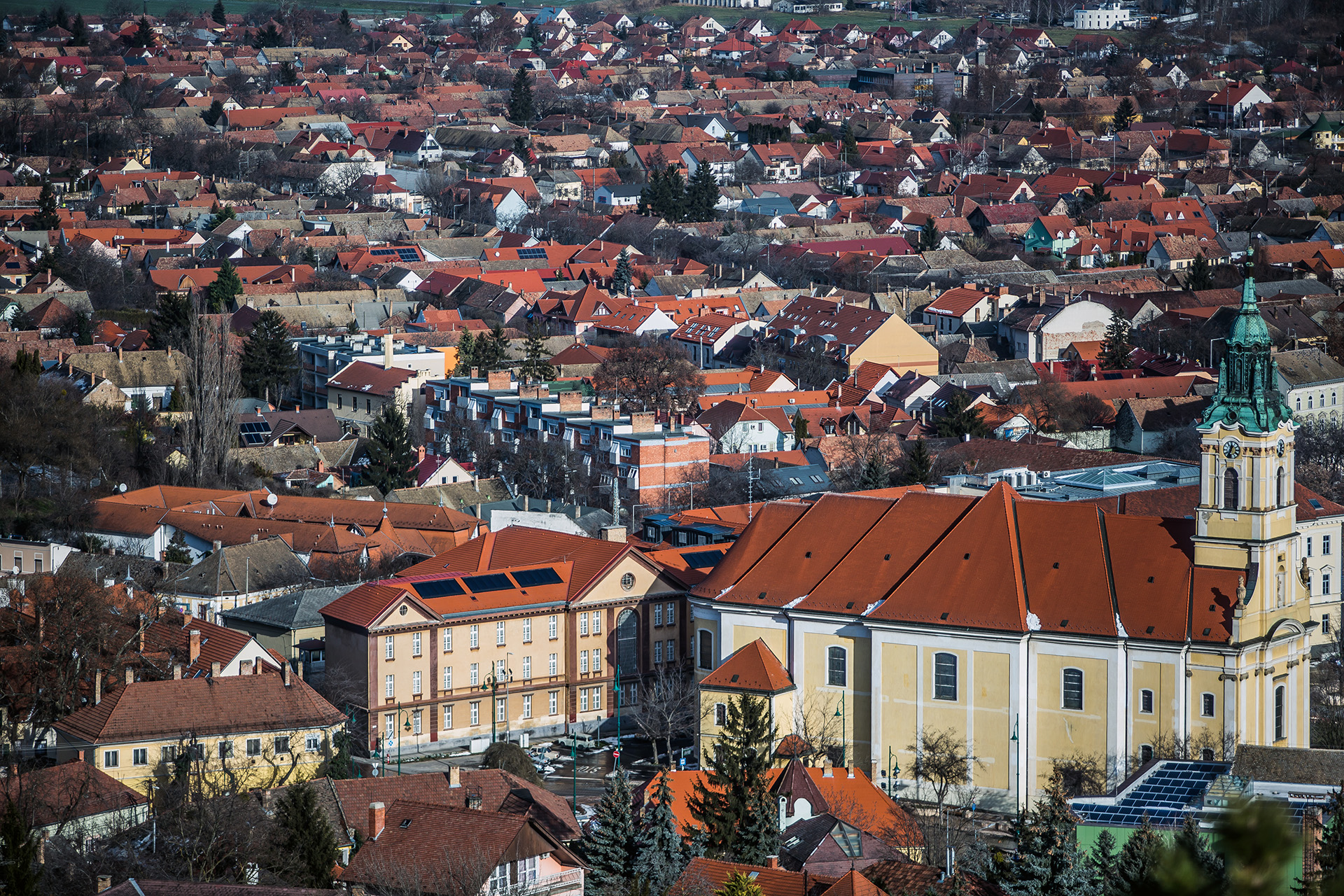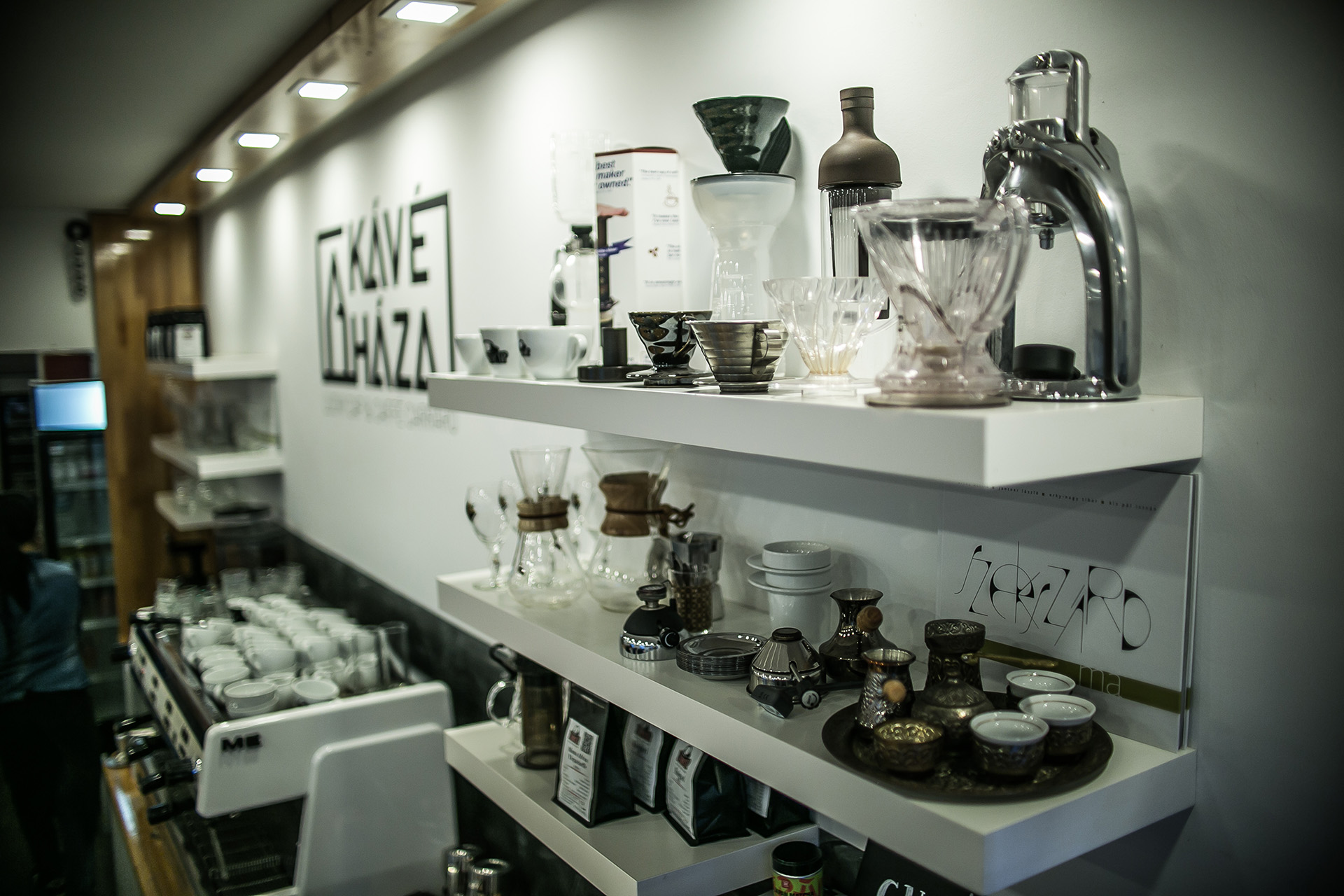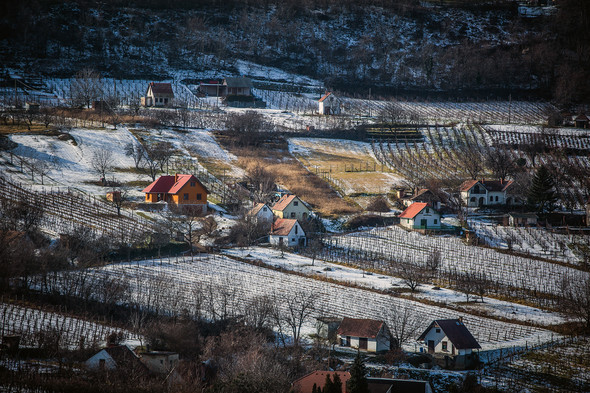The Szekszárd wine region, although perhaps little known internationally, holds a special place in Hungarian hearts. There was already grape production along the Danube on the west-facing Szekszárd hills in Roman times; this was evidenced by a white marble sarcophagus with vine leaves and bunches of grapes found in an excavation in 1845 as well as a sacrificial glass chalice found next to it, held together by an iron band with Greek inscriptions.
“Make a sacrifice to the shepherd, drink and you shall live.”
The first official mention of Szekszárd grapes from the Middle Ages dates from 1267. Later, Serbs unwillingly fleeing continually north ahead of the Osman Turkish troops brought a more modern method for making red wine and, more importantly, the Kadarka grape variety with them to the wine region. This Pontus variety already enjoyed great popularit in the Balkans, and then after the battle of Varna (Bulgaria) 1444, it also appeared in Villány, Ménes (now Minis in Romania), Szekszárd, the Great Plain, Eger, the Buda hills and the Mátra. It became so popular and successful that in the Hungary prior to the peace treaty ending the First World War (you just have to imagine looking at the map, adding on to modern-day Hungary the whole of Slovakia, the stretch of Austria along the border, the parts of the Ukraine lying to the west of the Carpathians, the whole of Transylvania from Romania, the part of Serbia north of the capital, Belgrade, the whole of continental Croatia as well as a bit of the coast from Rijeka (then Fiume) to the island of Pag, and a tiny bit of Slovenia along the border), 60% of the vineyards were planted with Kadarka.

Later Szekszárd came under the Turkish thraldom, but this did not automatically mean the loss of the wine region, from 1580 a census of the Muslim vineyard owners in Szekszárd was even kept! When the Turks left Hungary after 150 years, a new wave of settlement determined the image of Szekszárd, namely the Germans, or as the locals call them until today, the Danube Swabians. From 1720 they came continuously from Germany. They boarded a boat in Ulm and then the majority disembarked in Buda, the market town of Tolna or in the Bánát, so they could settle down and live, taking advantage of various sovereign and manorial favours, found families and begin to work. If the Serbs brought the main grape variety with them and fermented it on the skins in open wooden vats, then the Germans perfected their work with their precision and knowledge about fundamental cellar hygiene requirements. Thus, the Szekszárd red wine, with the help of Serb and German know how became one of Hungary’s best-known red wines…
“The Szekszárd wine occupies the most prominent place amongst the wines produced in our county. Its red colour is extremely similar to that of Burgundy. The amenity of its scent overtakes the breath of its delicious, spicy aroma, more powerful and noble than that too, but as concerns the flavour, sometimes more noble, sometimes the same and sometimes even inferior.” /Mátyás Bél – 1730/
Out of all the numerous grape varieties, by the middle of the 1800s, Kardarka was clearly the most important. At that time, Szekszárd wine was transported up the Danube to Buda and Pest and also to the south. In 1856, a Wine Merchant Society also developed in the town and, according to an 1867 price list, Szekszárd red wine (which at that time probably meant Kadarka), was a worthy competitor to Bordeaux and Burgundy, both in terms of price and shelf life. Important names such as the composer Franz Liszt and Pope Pius IX were known to consume them regularly. However, there were problems even at that time. The wine-making methods of the Szekszárd producers began to fall behind those of the French, so they were at a qualitative disadvantage even in the medium-term. In addition, many of the estates were financially weak, so the merchants were able to push down prices, leading to their further impoverishment, and hence a lack of development, which only served to further widen the gap. Finally, in 1886, phylloxera also reared its ugly head. There was rapid and total destruction, although Szekszárd was the quickest of the Hungarian wine regions to get itself back on its feet, and what’s more, the golden age of Szekszárd wine can be considered the years around 1910, both in terms of sales volumes and price. Unfortunately the First World War broke out in 1914, followed by the Great Depression (a winery cooperative was founded in Szekszárd in 1929 to counteract this!) and then the Second World War, followed by the articulation of German collective guilt, and finally Communism and the planned economy. Just as the Jews disappeared from Tokaj, the Swabians also disappeared from Szekszárd.

It is important to note that the overwhelming majority of German Hungarians did not sympathise at all with the ideas of National Socialism; if they were drafted into the army, they defended their county. Nevertheless, it was not uncommon when the heads of the household returned to their homes after 5 years of war (!) for them to be intercepted by Soviet soldiers and then immediately delivered onto another train, this time bound for Siberia. Those who returned home from there (after another 2-7 years) found that their homes longer belonged to them, they had no land and their families had been forcibly resettled to East Germany. Many people nevertheless hid, escaped to home, they were so bound to their homeland. So it might just be that many Szekszárd winemakers have Danube Swabian ancestors.

Now after this serious historical introduction, why is it worth visiting Szekszárd? Certainly, following the fall of Communism and the withdrawal of the Soviet troops, Villány was earlier in finding its way to capitalism, indeed for a long time Szekszárd simply followed Villány. The last 5-7 years, however, have been all about finding and establishing its own image, so in contrast to Villány’s serious career in importing Bordeaux varieties (you can read more about Villány Franc here), Szekszárd has placed its emphasis on Kékfrankos, Kadarka and the perhaps more famous Hungarian red blend Bikavér (Bull’s Blood). They have also designed their own Szekszárd bottle (click here to learn more about this), in which only about a third of wines, those of the highest quality, are entitled to be bottled. Here you can also find Fuxli (siller wines, which are darker than rosé, but lighter than red wines) as well as rosé, which nowadays more or less every winery produces. Of course, you can find lovely Merlot and Cabernet Franc in almost everyone’s range, but they don’t talk about that, that’s not the point. (So taste some of these too if you come here! You’ll be surprised!) There are already at least 40 serious wineries, who can be relied on to produce good quality wines and not long ago a 4-star hotel opened in the town centre. You can tour the vineyards, go kayaking in the backwaters of the nearby Danube and in autumn listen to the rutting of the deer in the legendary Gemenc hunting lands; moreover, you can also find here what is probably Hungary’s best coffee shop! So, Szekszárd, as the saying goes about Paris of old, is worth a mass.
The picture wouldn’t be complete if we didn’t recommend some reading matter for the starlit nights. As we’re in Szekszárd, let’s take Mihály Babits, the famous creator of great works of both poetry and fiction, who was born in the town; his Nightmare examines really serious psychological questions. If you’re after something a bit more modern, then read something by the 2015 Man Booker prize winner, László Krasznahorkai. Let’s say the Satantango.






